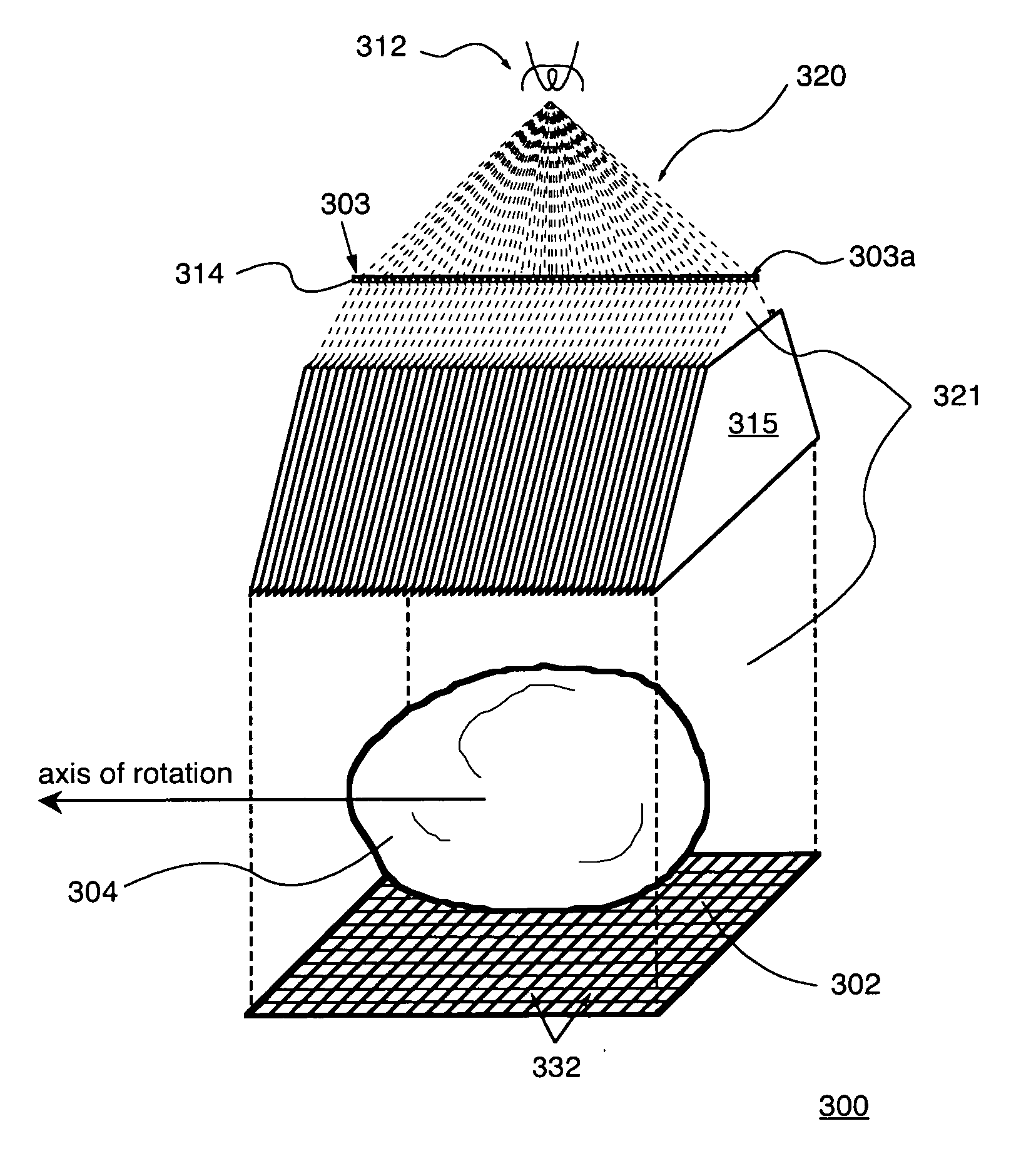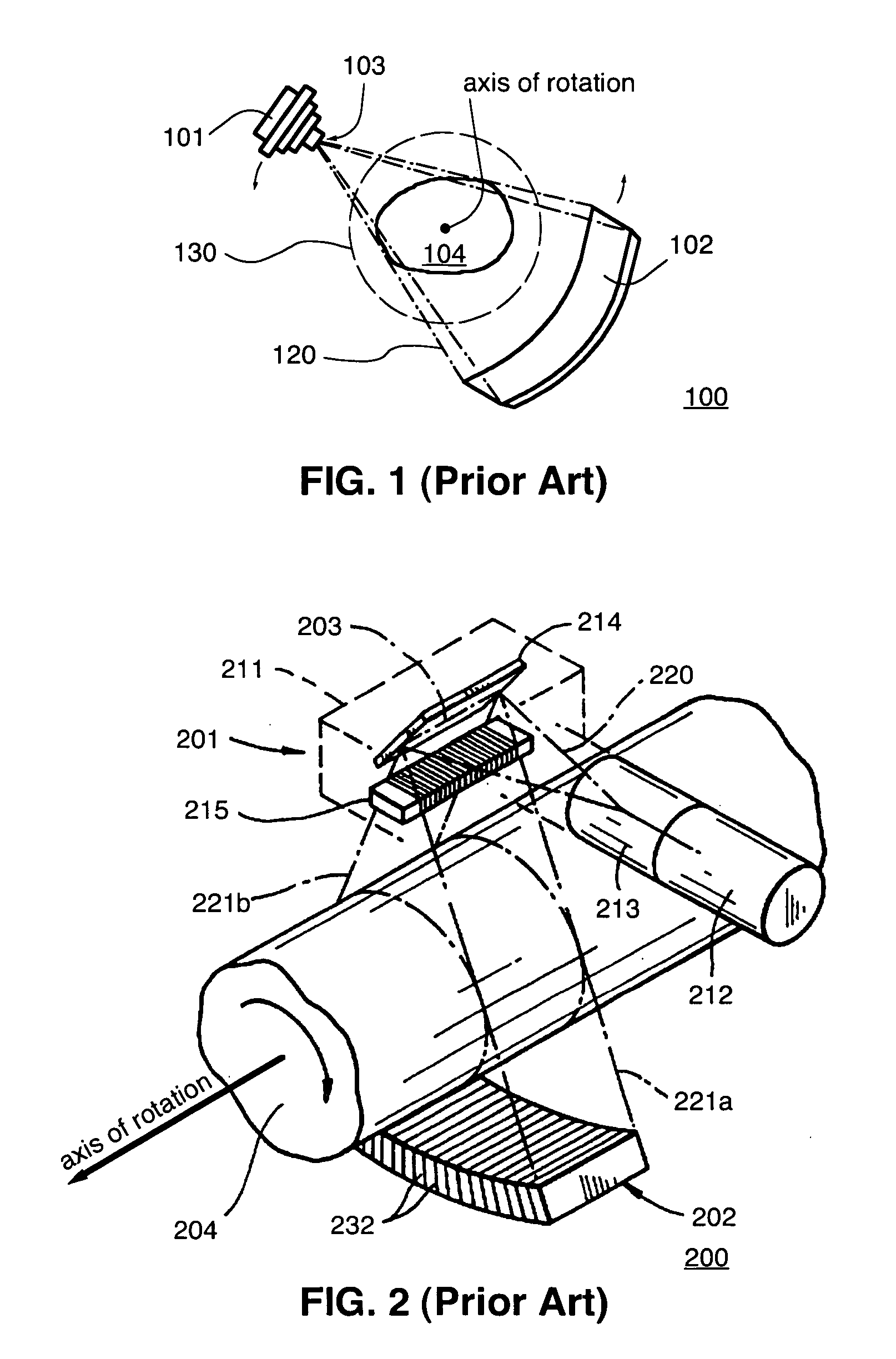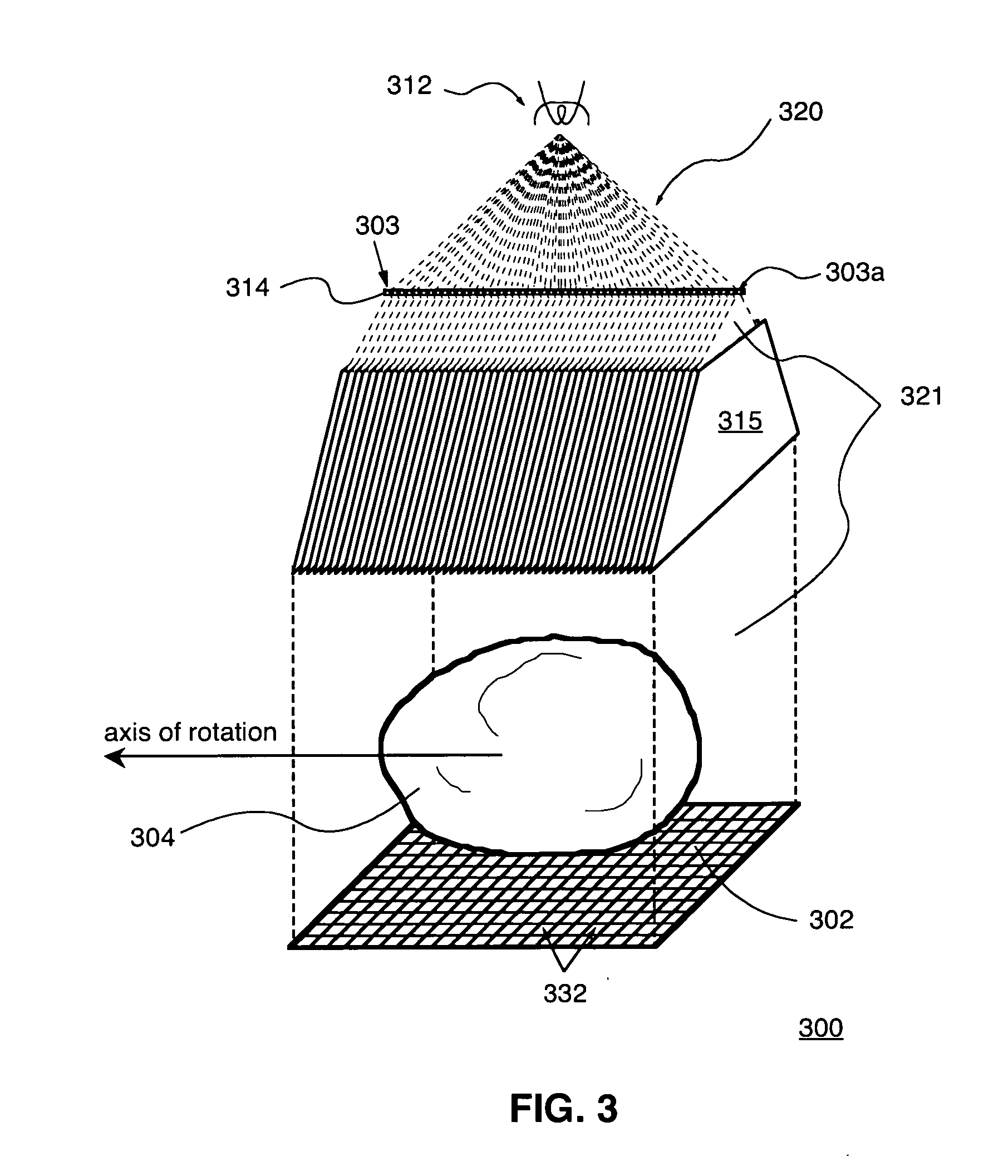Volumetric computed tomography (VCT)
a computed tomography and volumetric technology, applied in the field of ct systems, can solve the problems of obstructing visibility, inability to know, and multi-detector or multi-row ct systems still need more than one revolution during image scanning, and achieve the effect of fast and reliabl
- Summary
- Abstract
- Description
- Claims
- Application Information
AI Technical Summary
Benefits of technology
Problems solved by technology
Method used
Image
Examples
Embodiment Construction
[0019]FIG. 1 illustrates a prior art cone beam CT system 100. System 100 includes an x-ray source 101, which employs an x-ray tube, for providing x-rays 120 emanating from a point 103, hereinafter referred to as the focal spot 103. The detector array 102 can be a wide arc or a flat 2-dimensional array containing dozens or hundreds of rows of x-ray detectors. Detector 102 measures x-rays emanating in all directions from the focal spot 103. The cone beam CT system 100 is characterized by the shape of x rays 120 emanated from the focal spot 103 onto the detector array 102. Both the x-ray source 101 and the detector array 102 may be mounted on a gantry (not shown), and may revolve around an axis of rotation of a circular opening 130. The gantry could be a C-arm. An object 104, typically a patient, is positioned in the circular opening 130 via an examination platform, e.g., a motorized table (not shown) that can move up or down and slide in or out of the circular opening 130, so as to pl...
PUM
| Property | Measurement | Unit |
|---|---|---|
| thickness | aaaaa | aaaaa |
| thickness | aaaaa | aaaaa |
| angle | aaaaa | aaaaa |
Abstract
Description
Claims
Application Information
 Login to View More
Login to View More - R&D
- Intellectual Property
- Life Sciences
- Materials
- Tech Scout
- Unparalleled Data Quality
- Higher Quality Content
- 60% Fewer Hallucinations
Browse by: Latest US Patents, China's latest patents, Technical Efficacy Thesaurus, Application Domain, Technology Topic, Popular Technical Reports.
© 2025 PatSnap. All rights reserved.Legal|Privacy policy|Modern Slavery Act Transparency Statement|Sitemap|About US| Contact US: help@patsnap.com



